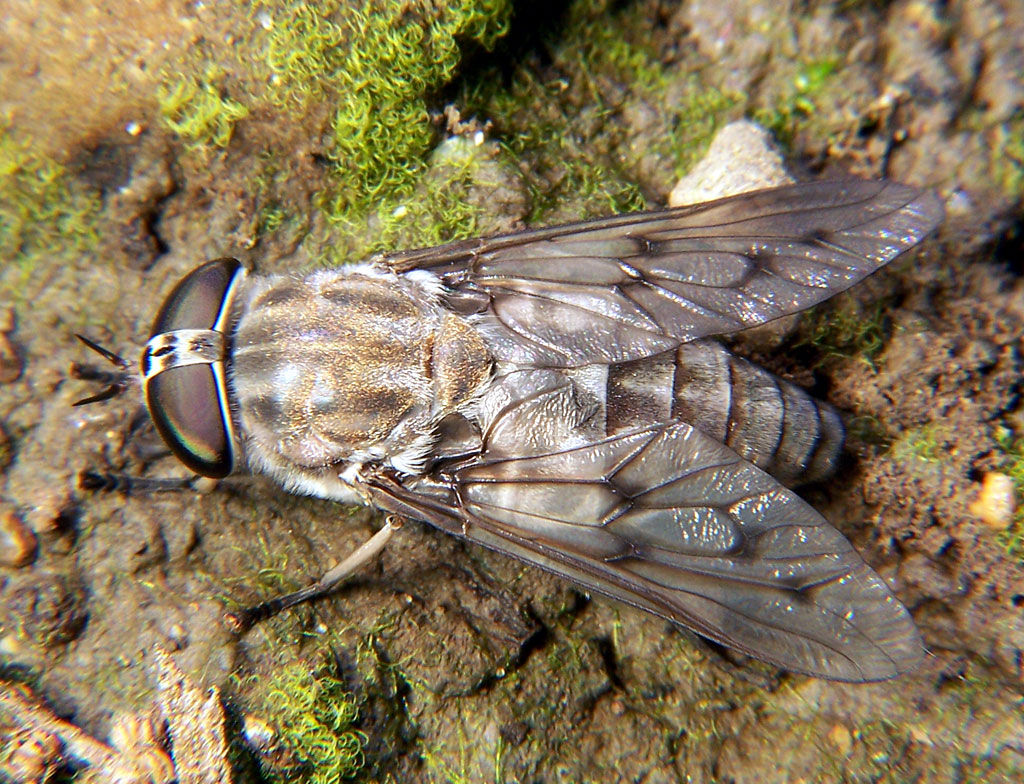
Since cold and frost will kill a bot fly the whole bot population spends winter inside horses. Egg larvae pupae and adult.
The males lack these mouthparts so feed on nectar.
Life cycle of a horse fly uk. Horse-flies lay their eggs on the plants that grow in damp places. When the larvae hatch they crawl down into the moist earth or into the water where they live as voracious predators of the prey they can overpower. The adult horse-flies are active and.
What is the horse fly life cycle. The life cycle of the horse fly is divided into four distinct stages. Egg larvae pupae and adult.
Like all other insects horse flies start their lives as eggs. Horse flies lay their eggs in clusters that can contain anything from 100 to 1000 individuals. The eggs are cylindrical in shape and creamy white when first deposited but they quickly darken and become gray.
Usually influenced by the species as well as the environment this stage usually takes place between 6 and 12 days. Under optimal temperatures the stable fly can develop from egg to adult in 12 days. Piles of moist decaying plant material eg.
Grass clippings hay silage should be considered potential sources of stable flies especially when this material is mixed with animal manure and urine. Compost and piles of grass clippings are ideal breeding sites for stable fly larvae and may serve as the production source. The horsefly is a large hairy fly whose bite can be extremely painful.
The females will bite animals - including humans - for blood which they need to produce eggs. The female flies have two. The entire cycle takes nine months in total.
Since cold and frost will kill a bot fly the whole bot population spends winter inside horses. Therefore worm your horse with Iver- mectin which. First off youll know about it pretty quickly.
The bites are painful and itchy. Horsefly bites develop into large red itchy swollen bumps within minutes. For most people theyre completely.
The Notch-horned cleg-fly is a common species of horse fly that lives in long grassland and damp woodland habitats. The females have sharp biting mouthparts and usually feed on the blood of large mammals such as cows and horses. The males lack these mouthparts so feed on nectar.
Females wait in shady areas for their prey to pass-by locating it by sight with their large compound eyes. The lifecycle of a fly begins as an egg. After some time a few days or months depending on the fly type the egg hatches and the larva comes out of it.
Larva feeds on the organic matter and when it has stored sufficient nutrients it goes into the pupal stage. The pupal stage can again be of several days or months. During the pupal period the development of the actual fly like features wings legs etc begin.
From the pupa the adult fly. Males usually die after mating and the females after laying eggs. The life cycle has a duration of about two weeks at temperatures around 27 C 81 F.
The duration is highly dependent on temperature and nutrient quality available for the larvae. Bishop 1913 noted that the larvae can endure for more than 30 days in less nutritious environs. Fly pupae are similar in function to butterfly cocoons.
Their hard brown shells protect the inactive developing flies. Over the course of three to six days the pupae develop legs and wings ultimately emerging as full-grown house flies. Within two to three days female house flies are capable of reproduction.
Life Expectancy of House Flies. The mouth parts of a female horse fly look like saw blades. It cuts a hole into the skin in order to feed on the blood that comes out.
Male horse flies do not bite as they do not have biting mouth parts hence they feed on flower nectar. A horse fly larva takes a year to become an adult. And an adult horse fly lives for only few days.
Horse fly season. Female horse flies will lay their eggs in open water particularly standing water such as ponds marshes animal troughs but will also happily use standing water in kids paddling pools ornamental garden ponds or any other source of standing water or damp and boggy areas to breed. Adult horse flies will start to emerge from these marshy muddy areas where they have been.
As there are many species of horse flies Ill use Tabanus atratus the black horse fly as an example because its large nearly an inch. Its striking being almost all black. And it has a common name officially recognized by the Entomological.